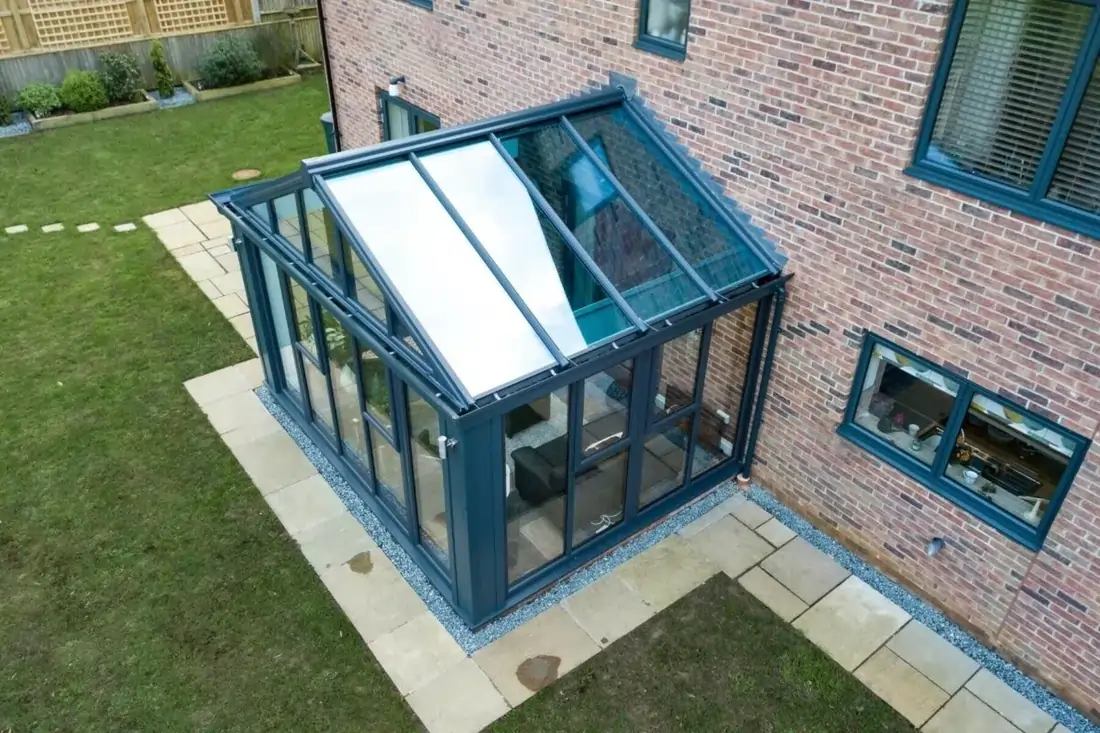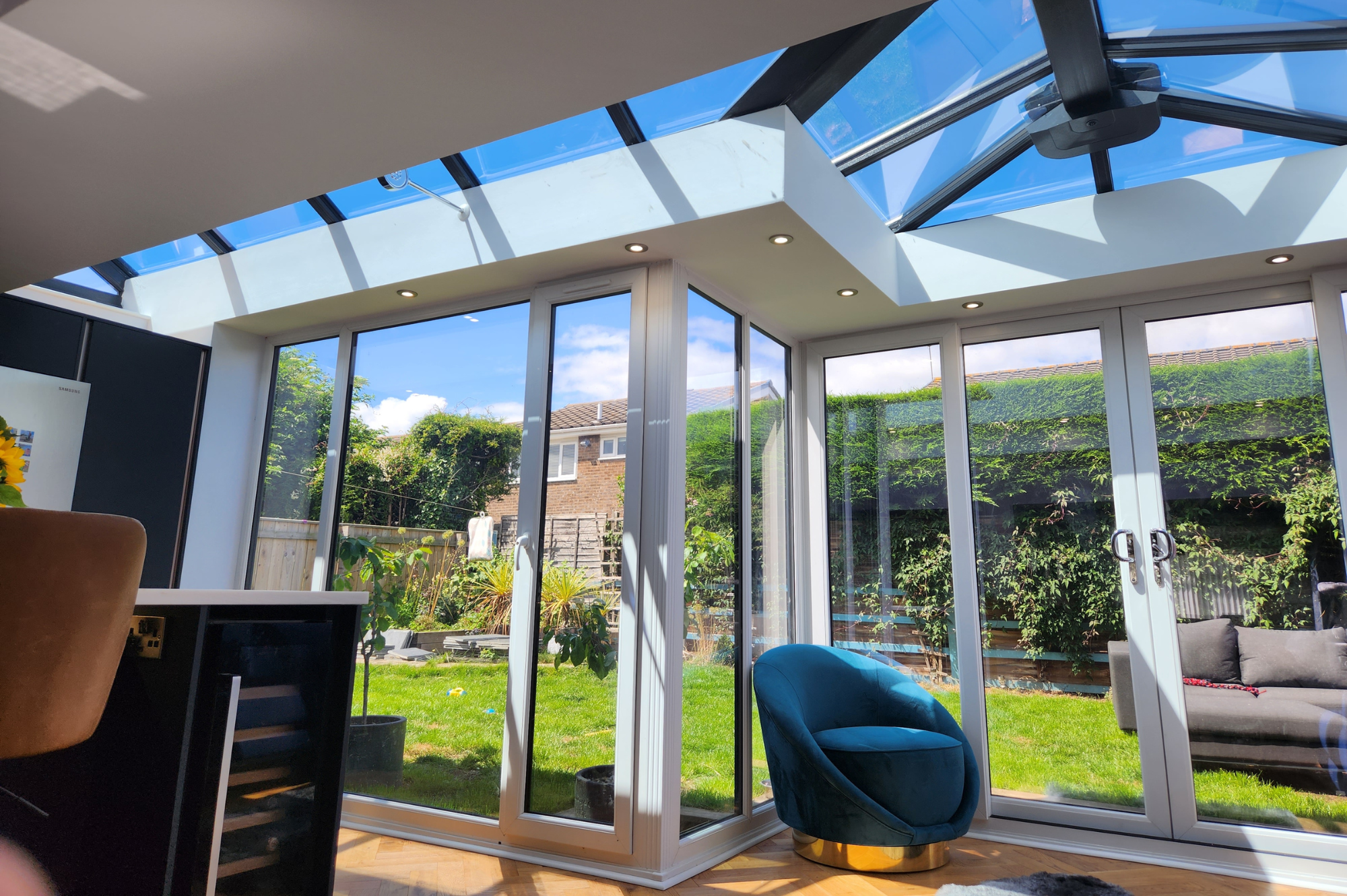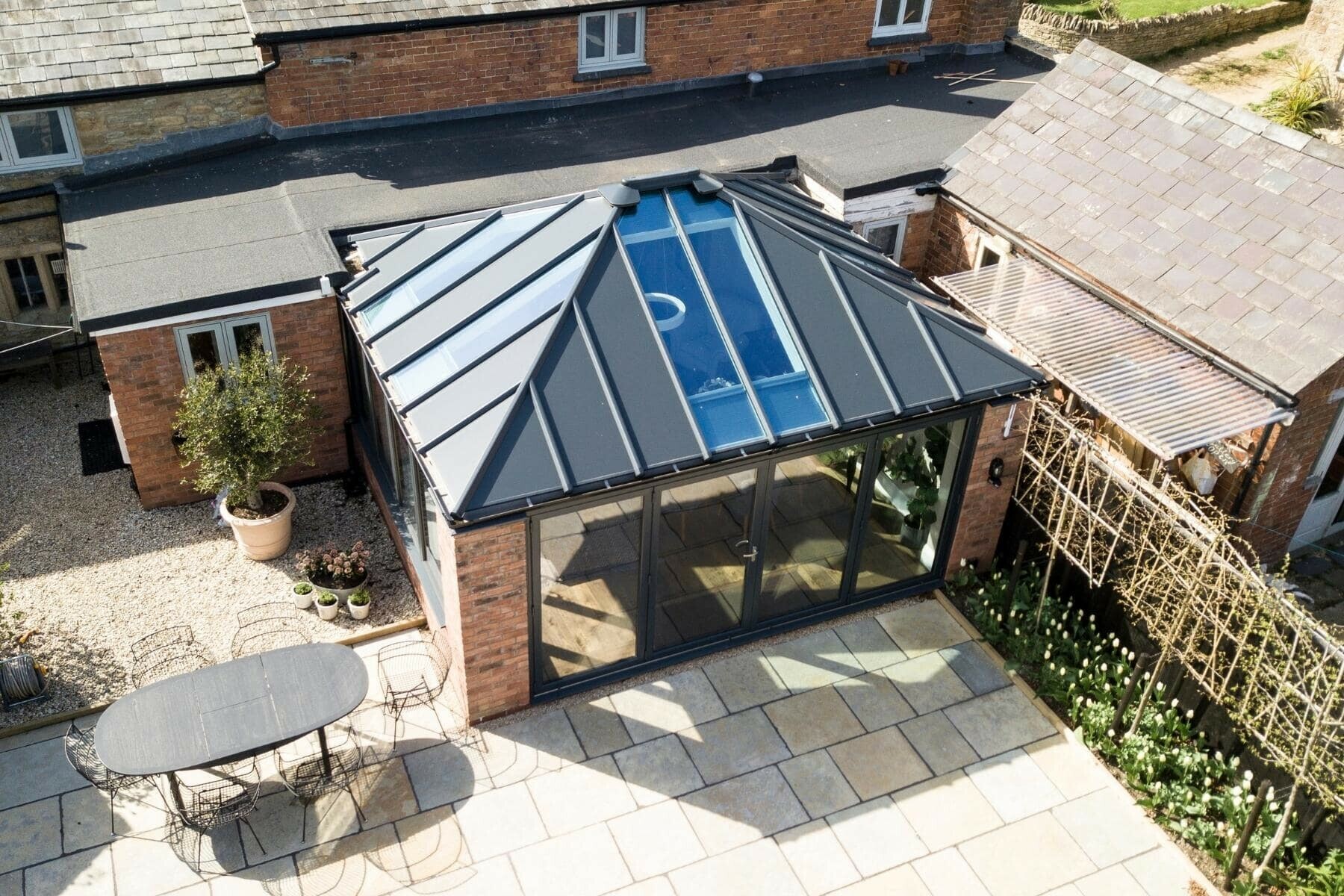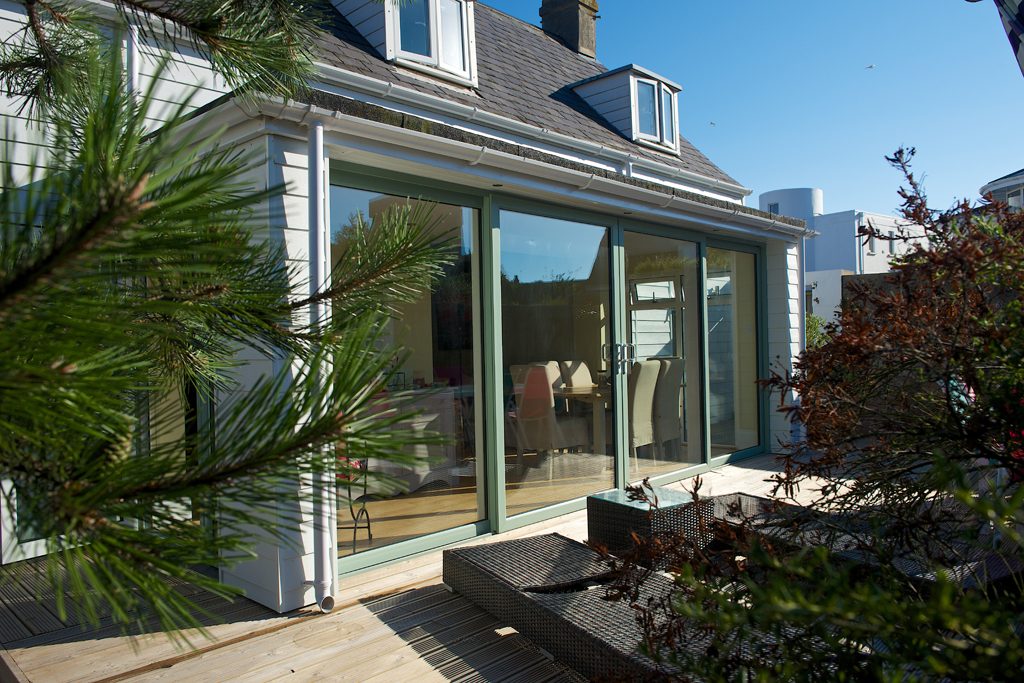- 16 October 2025|
- Conservatories

A leaky conservatory can cause serious problems for homeowners – from water damage and mould to rising energy bills and damaged flooring. If your conservatory is letting in rain or showing signs of condensation, it’s important to act quickly.
This guide will help you identify the cause of the issue, understand your repair options, and decide when a conservatory roof replacement might be the right solution. If you’re based in the North East, Enhance Conservatories is on hand with trusted advice and professional repairs, tailored to your home.
TL;DR: Key takeaways
- A leaky conservatory often starts with failed sealant, blocked gutters or damaged roof panels
- Early action helps prevent long-term damage
- Older conservatories are more at risk of leaks, condensation and poor insulation
- Enhance Conservatories offers expert conservatory roof repairs and replacements across the North East
Common signs your conservatory is leaking
If you spot any of these issues, your conservatory could be leaking:
- Drips during or after heavy rain
- Damp patches on ceilings, walls or flooring
- Peeling paint or discolouration
- Persistent condensation or musty smells
- Visible cracks in sealant or roof panels
- Mould or mildew around windows or roof edges
These symptoms often worsen over time. Catching them early can save you money and protect your home.

What causes a leaking conservatory?
There are several common causes of leaks:
Failed sealant
Over time, the sealant around your roof panels, windows, and doors can degrade due to age, UV exposure, or temperature changes. This allows water to seep into joints that were once watertight. If you notice cracks, peeling, or gaps in the sealant, it’s often the first sign that your conservatory is vulnerable to leaks. Re-sealing small areas may be a quick fix, but widespread deterioration may require professional resealing or further repairs.
Damaged or loose roof panels
Polycarbonate and glass roof panels are common in older conservatories, but they’re not immune to damage. Panels can warp, shift, or even crack with age, especially after years of exposure to harsh weather. Even a slight misalignment can let water in through the gaps. Damage like this often leads to recurring conservatory roof leaks and poor insulation, making the space less energy-efficient and less usable.
Poor flashing installation
Flashing is the thin strip of metal or waterproof material that seals the join between your conservatory roof and the main house wall. If this flashing has been poorly installed, or if it’s come loose or deteriorated, it becomes a common source of leaks – especially during bad weather. Poorly sealed flashing can allow water to track down behind the wall, leading to dampness, mould, and even structural damage if left unresolved.
Blocked or broken gutters
Your gutters are designed to carry rainwater safely away from your conservatory. When they become clogged with leaves, moss or other debris, water backs up and overflows. This overflow can pool near the roof edges or foundations, increasing the risk of a leaking conservatory roof or even damage to the base and surrounding flooring. Regular maintenance is essential – particularly during autumn and winter, when debris build-up is most likely.
Poor ventilation and condensation
Ventilation plays a key role in keeping your conservatory dry and comfortable. Without adequate vents or air circulation, moisture builds up inside the structure. This results in ongoing condensation on windows and roof panels, which can drip onto internal surfaces and lead to mould growth or damage to soft furnishings. Over time, this persistent damp environment can also contribute to leaks, especially if it weakens seals or structural materials.

Step-by-step: What to do if your conservatory is leaking
Step 1: Locate the source of the leak
Begin by identifying where water is appearing – it might be a drip, damp patch, or stained area on the ceiling, walls, or flooring. Start at the roof, since that’s where most conservatory leaks begin. Then move down to the walls, door seals, windows, and finally, the gutters. It’s important to note that water can travel internally before becoming visible, so the leak’s origin point might not be directly above the visible damage. Use a torch if necessary and take notes or photos to track multiple problem areas.
Step 2: Inspect roof panels and seals
Check all conservatory roof panels – whether polycarbonate or glass – for signs of damage or movement. Even small issues can cause leaks. Look for:
- Gaps between roof sheets, which allow rainwater to pass through
- Cracked or missing sealant at joints or panel edges
- Dislodged panels, which may have shifted due to wind, ageing fixings, or thermal movement
These are among the most common causes of a leaky conservatory, especially in older builds or where routine maintenance hasn’t been carried out recently.
Step 3: Clear gutters and check drainage
Blocked gutters and downpipes are a frequent cause of water pooling around the conservatory roof or base. Use gloves or a gutter scoop to remove any leaves, moss, or debris. Once cleared, run water through the system to check flow and look for any signs of overflow or leaks. Make sure the drainage system channels water away from the structure effectively. Standing water near your base or overflowing gutters often signals poor drainage – which can lead to flooring issues and dampness inside.
Step 4: Look at flashing and joints
Inspect the flashing – the waterproof strip where the conservatory roof meets the main property. This area is particularly vulnerable to movement, age-related wear, or poor installation. If you spot cracks, lifting sections, or signs of water staining beneath the joint, the flashing may be compromised. DIY repairs here are risky, as poor workmanship can make the issue worse. In most cases, professional assessment and repair are the safest and most effective route.
Step 5: Improve ventilation
If you’re noticing consistent condensation – especially in colder months – poor ventilation may be to blame rather than a physical leak. Make sure roof vents and trickle vents are present and unobstructed. Consider whether furniture placement or sealed window units might be blocking airflow. In some cases, older conservatories weren’t designed with enough ventilation in mind, leading to trapped moisture that mimics the signs of a leak. Adding vents or upgrading the roof system can reduce condensation and improve the space’s comfort all year round.
Can I repair my leaky conservatory or do I need a new roof?
This depends on the overall condition of your conservatory roof and how extensive the damage has become. Small, isolated leaks might be resolved with a simple repair, but if the roof panels, sealant or flashing are failing in multiple areas, a full roof replacement may be the more reliable solution.
A simple repair may be enough if:
- The leak is caused by sealant or a blocked gutter
- Your roof panels are in otherwise good condition
- Flashing issues are localised and haven’t caused structural damage
A roof replacement may be better if:
- You’ve had repeated issues with leaking roof panels
- The energy efficiency of your conservatory is poor
- Your polycarbonate roof is 15+ years old
- Water damage is widespread or internal structures are affected
Fact: According to industry data, more than 40% of conservatories over 15 years old show signs of leaks or insulation failure.

How Enhance Conservatories can help
With over 30 years’ experience across the North East, Enhance Conservatories specialises in conservatory roof repairs, replacements, and upgrades.
We offer personalised advice, fast service, and long-lasting results – all tailored to your budget and home.
Need help with a leaky conservatory?
Whether you’re dealing with a minor leaking roof or are ready for a full conservatory roof replacement, our team is ready to help.
Book your free home consultation today or call us for expert advice.
Let’s make your conservatory warm, dry and enjoyable again – whatever the weather.